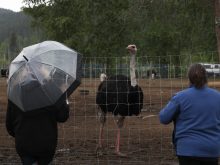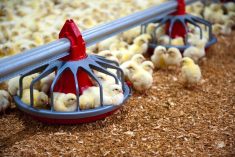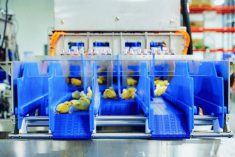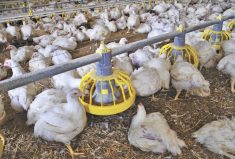Ahead of a recent global summit on animal health, the World Organization for Animal Health’s director general suggested countries should consider vaccinating animals to stop the spread of diseases like bird flu.
“Vaccination is a tool. It’s a very good tool when it exists, but it’s up to each country, region, or group of countries to identify in which case it will be useful to use it or not,” Emmanuelle Soubeyran told Reuters ahead of the start of WOAH’s general assembly on May 25.
Read Also
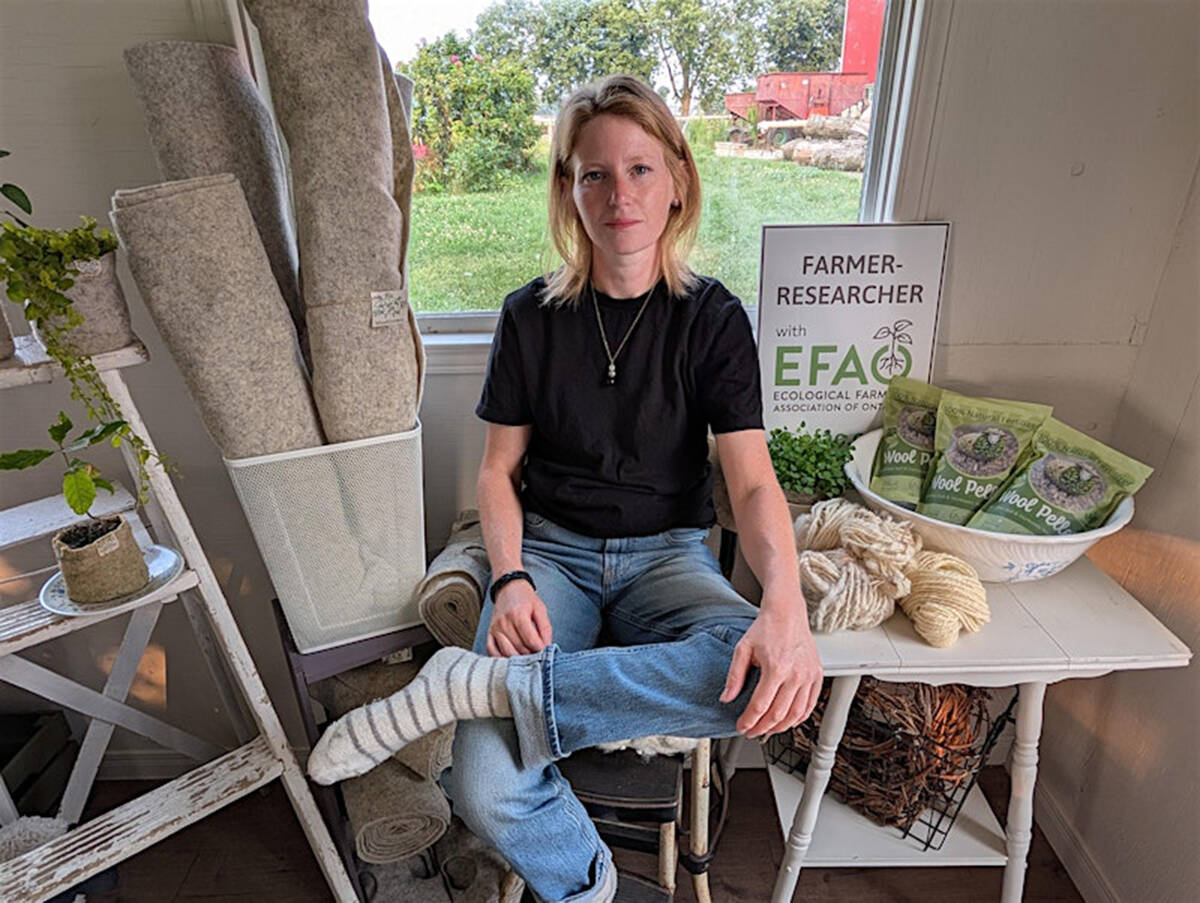
From fleece to fertile ground
Lindsey Weber turns Canadian wool into sustainable, biodegradable weed suppression and horticulture alternatives to plastic, boosting farm sustainability and revitalizing Canada’s wool industry.
France, which requires farmed ducks to be immunized against bird flu, has hailed its vaccination program as a success. Other countries, like Mexico and China, have also tried vaccination to combat avian influenza.
Canadian poultry farms have been repeatedly hit by avian influenza, and across the border, U.S. dairy cattle have also joined the ranks of infected. So why don’t Canadian farmers immunize their birds?
“One more preventative measure, such as vaccination, would be welcomed by poultry producers,” said Wei Jia, manager of research and programs at Manitoba Egg Farmers.
“It’s a complicated topic, though. International policies on trade, national policies on vaccinations and monitoring protocol must be developed first.”
Trade disruptions
Canada’s supply-managed poultry and egg sectors are largely concerned with domestic consumers. However in 2024, they exported some $1.18 billion in poultry, eggs, live poultry and hatching eggs, Statistics Canada data shows.
Vaccination could muddy the waters.
Vaccines use various methods to essentially trick the body into producing an immune response — gearing up to fight a disease.
Current poultry vaccination isn’t completely sterilizing, said Angela Rasmussen, a virologist at the Vaccine and Infectious Disease Organization (VIDO) at the University of Saskatchewan.
This means that while vaccinated birds may not become ill, they could still be infected and might pose a biosecurity risk.
Countries that have implemented widespread vaccinations have seen new virus variants emerge that can circumvent the vaccine, said Rasmussen. These variants have been better adapted to infecting birds. But on the upside, these strains are less likely to be transmitted to humans.
These jurisdictions saw fewer outbreaks that required culling of flocks, Rasmussen said, and have not seen transmission to humans.
“So, those vaccines are actually pretty successful,” she said.
Countries that have previously spurned vaccination may soon reconsider, she added, as flock losses pile up.
WOAH is working on global standards to distinguish vaccinated birds from infected ones, the organization said in its 2025 report on the state of the world’s animal health.
In co-operation with the International Alliance for Biological Standardization, its developing surveillance standards for vaccinated poultry to establish monitoring systems that will “ensure vaccination does not create unnecessary trade barriers,” the report said.
Complicated Logistics
For similar reasons, implementing a vaccine plan would require beefed-up surveillance for bird flu, said Manitoba chief veterinary officer Glen Duizer.
“If they’re vaccinated and not showing the disease, it’s harder to detect them,” Duizer said. “If they do have the disease and you’re not seeing it, then there’s a lot of contact, a lot of movement that can happen that can spread the disease.”
In normal circumstances, avian influenza cases are caught when a farm worker notices poultry showing symptoms. Then, if a case is confirmed, surveillance would be stepped up for nearby barns or barns that had contact with the infected flock.
Manitoba would likely only decide to vaccinate chickens in the face of a mounting bird flu threat — for example, if there was a sharp spike in cases in the province, or in a nearby jurisdiction, Duizer said. However, this makes timing the vaccines difficult.
Ideally, he said, birds would be vaccinated while still in the egg or as chicks at the hatchery.
“It’s easier to vaccinate at that stage versus having to go in and catch … 10,000 individual birds and inject them.”
If flocks at risk are well past the chick stage, vaccination would be tough to pull off quickly.
Given the cost and effort it would take to vaccinate and increase surveillance, Manitoba would have to see a mounting threat before it put a vaccine strategy into motion, Duizer said.
This year, Manitoba has seen two confirmed cases of avian influenza as of May 26. One case was confirmed in 2024, and two were found in 2023 according to Canadian Food Inspection Agency data.
British Columbia saw 81 cases of highly pathogenic avian influenza between Oct. 21, 2024 and Jan. 11, 2025.
B.C. Poultry Association spokesperson Shawn Hall said that province has a research project on vaccines underway. While the association isn’t directly involved in that research, Hall said it would be supportive of new measures against the disease.
A spokesperson for B.C.’s minister of agriculture and food said it had a program in place to help the industry prepare for the risk of avian influenza, including through the development of new tools. However, it did not say if it was considering vaccination.
The spokesperson pointed to the CFIA as the agency responsible for vaccine decisions in Canada.
No plan yet
To date, the CFIA doesn’t have a plan in place for vaccinating poultry against avian influenza.
“In Canada, vaccination against HPAI is not permitted at this time,” a CFIA spokesperson said in a statement to Glacier FarmMedia.
Three avian influenza vaccines are approved for use in chickens but only for emergency preparedness. They’re not commercially available.
The CFIA has an avian influenza vaccination task force composed of industry group, government and veterinary representatives. The group is exploring the pros and cons of a vaccination program, the CFIA’s website says.
“Any decision regarding vaccination against HPAI will be made by the CFIA and will be informed by task force discussions,” the spokesperson said.
“These are complex issues and conversations are ongoing as we learn more from both science and international experience.”
Why does it matter?
In the last 20 years, over 633 million birds have died from bird flu infection or culling, WOAH says in The State of the World’s Animal Health.
Avian influenza has spread to new regions and new species of wild and domestic birds, marine mammals, livestock and pets. It has spilled over into humans and in some cases — like a three-year-old girl in Mexico’s Coahuila state — caused death.
“The economic fallout has been severe, with major disruptions in international trade, affecting local poultry industries, and consumers of poultry products,” WOAH said.
“Though the risk of human infection remains low, the more mammalian species that are affected, the greater the possibility of the virus adaptming to mammal-to-mammal, and potentially human, transmission.”
While strict biosecurity is still essential, “the relentless spread of the virus, despite aggressive containment efforts, demonstrates that more must be done,” WOAH said.
The organization suggests vaccination could complement other efforts by reducing virus circulation in and between flocks.
In laying hens, vaccination could be a useful tool to control the spread, said Julian Madeley, director general of the World Egg Organization, in the WOAH report.
“Newcastle disease serves as an example,” Madeley said.
“Once we had effective vaccination strategies, it became a manageable problem. Outbreaks still occur, but they no longer devastate the industry as they once did.”
“We need to continue advocating for vaccination as an additional tool, complemented by biosecurity and surveillance,” he said. “We must ensure that best practice tools are made available to farms so that they can carry out these measures effectively.”






